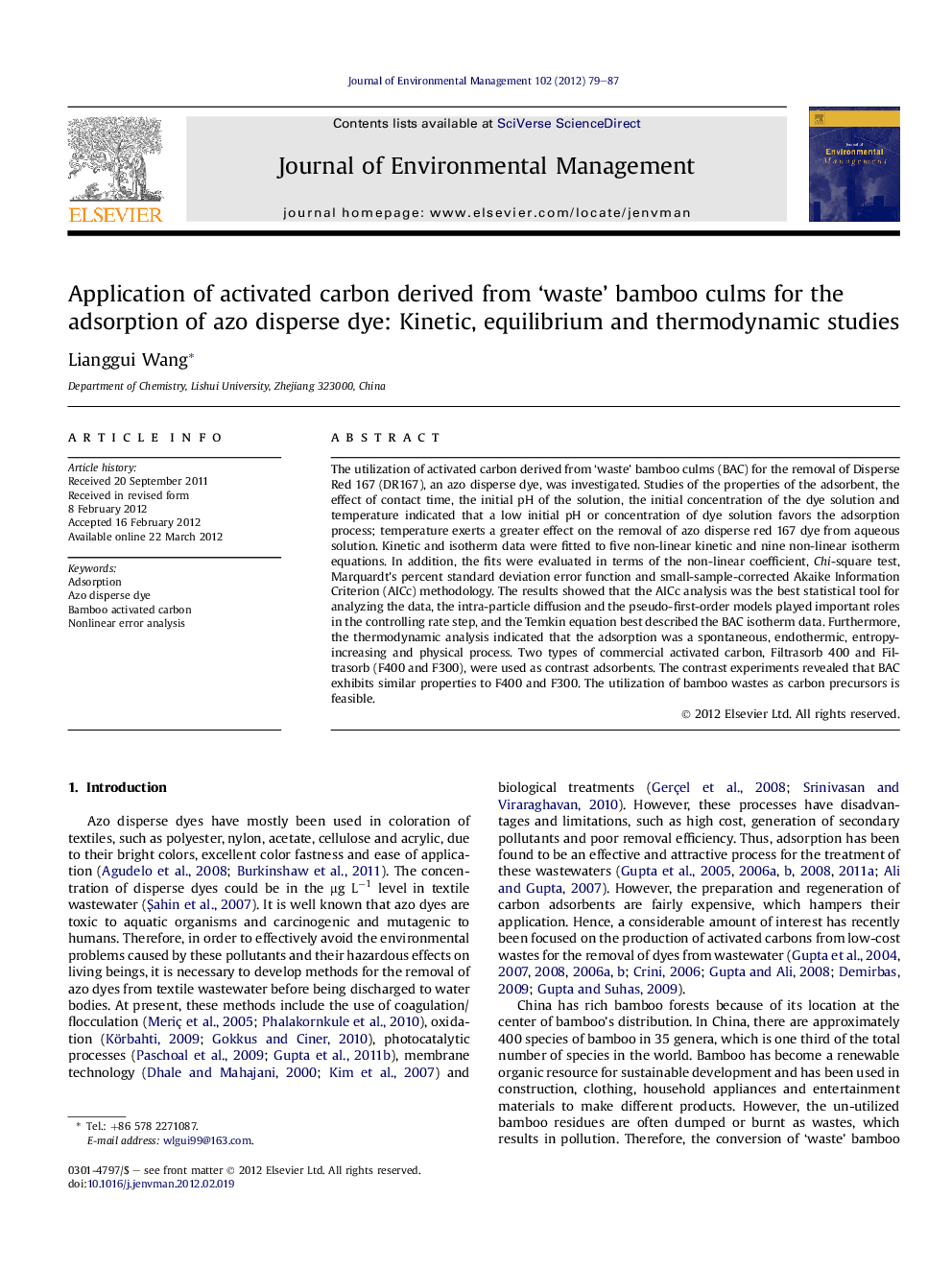| کد مقاله | کد نشریه | سال انتشار | مقاله انگلیسی | نسخه تمام متن |
|---|---|---|---|---|
| 1056815 | 1485310 | 2012 | 9 صفحه PDF | دانلود رایگان |

The utilization of activated carbon derived from ‘waste’ bamboo culms (BAC) for the removal of Disperse Red 167 (DR167), an azo disperse dye, was investigated. Studies of the properties of the adsorbent, the effect of contact time, the initial pH of the solution, the initial concentration of the dye solution and temperature indicated that a low initial pH or concentration of dye solution favors the adsorption process; temperature exerts a greater effect on the removal of azo disperse red 167 dye from aqueous solution. Kinetic and isotherm data were fitted to five non-linear kinetic and nine non-linear isotherm equations. In addition, the fits were evaluated in terms of the non-linear coefficient, Chi-square test, Marquardt's percent standard deviation error function and small-sample-corrected Akaike Information Criterion (AICc) methodology. The results showed that the AICc analysis was the best statistical tool for analyzing the data, the intra-particle diffusion and the pseudo-first-order models played important roles in the controlling rate step, and the Temkin equation best described the BAC isotherm data. Furthermore, the thermodynamic analysis indicated that the adsorption was a spontaneous, endothermic, entropy-increasing and physical process. Two types of commercial activated carbon, Filtrasorb 400 and Filtrasorb (F400 and F300), were used as contrast adsorbents. The contrast experiments revealed that BAC exhibits similar properties to F400 and F300. The utilization of bamboo wastes as carbon precursors is feasible.
► AICc would be a better tool to rank nonlinear kinetic and nonlinear isotherm models.
► The intra-particle diffusion and pseudo-first-order were the dominant rate-limiting steps.
► The nonlinear Temkin model described the adsorption isotherm of BAC well.
► ‘Waste’ bamboo culms are effective adsorbents of disperse red 167 dye.
Journal: Journal of Environmental Management - Volume 102, 15 July 2012, Pages 79–87